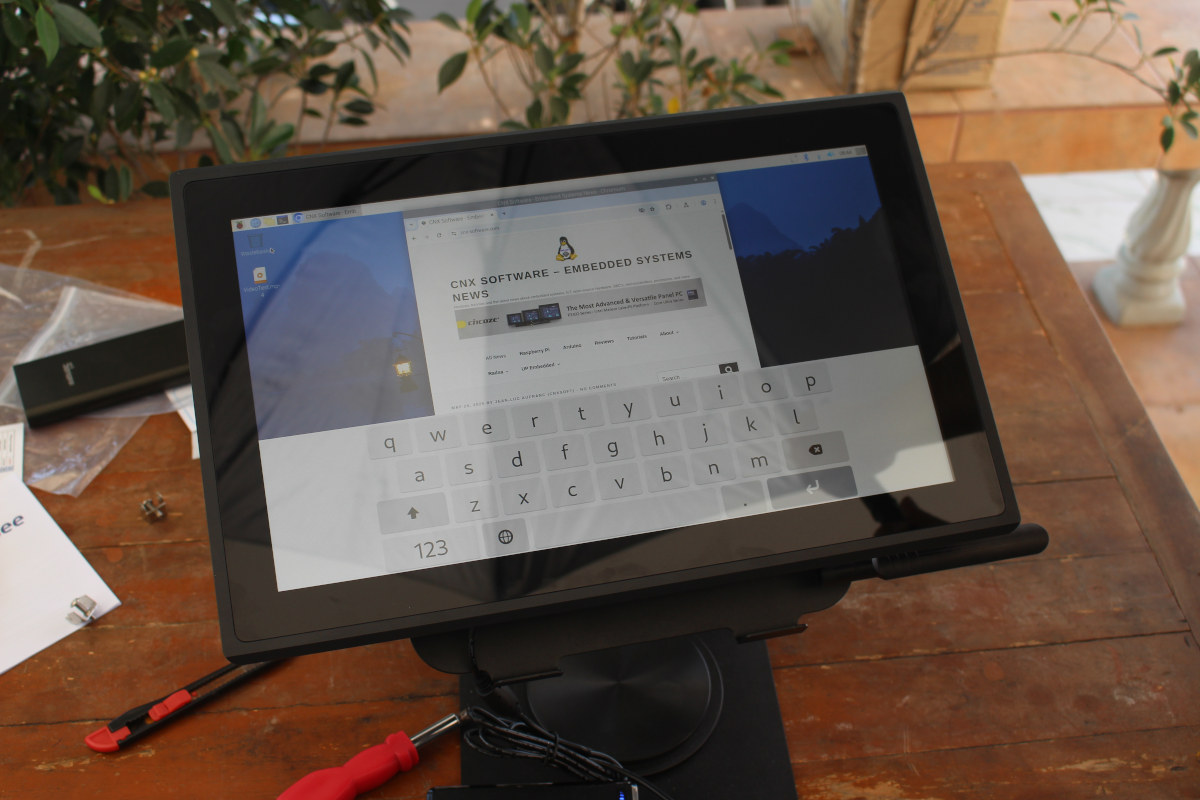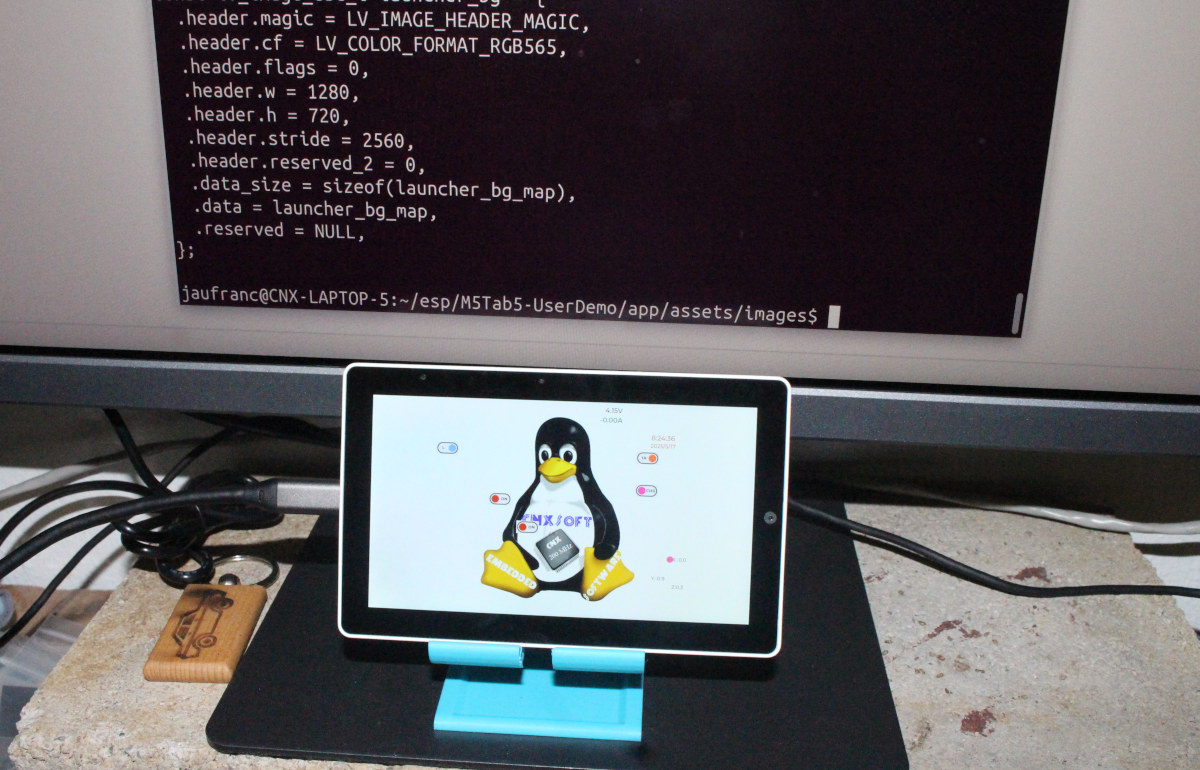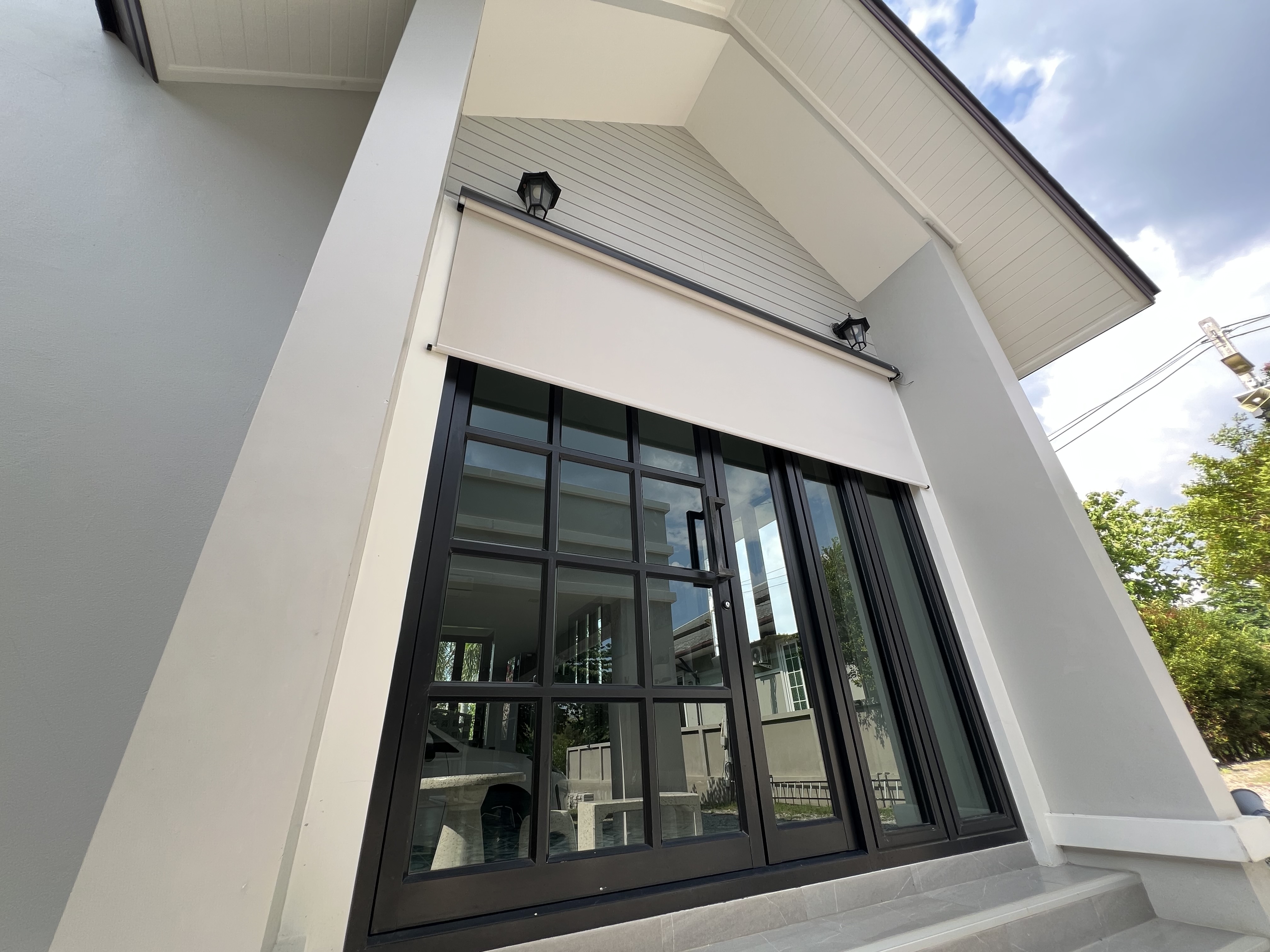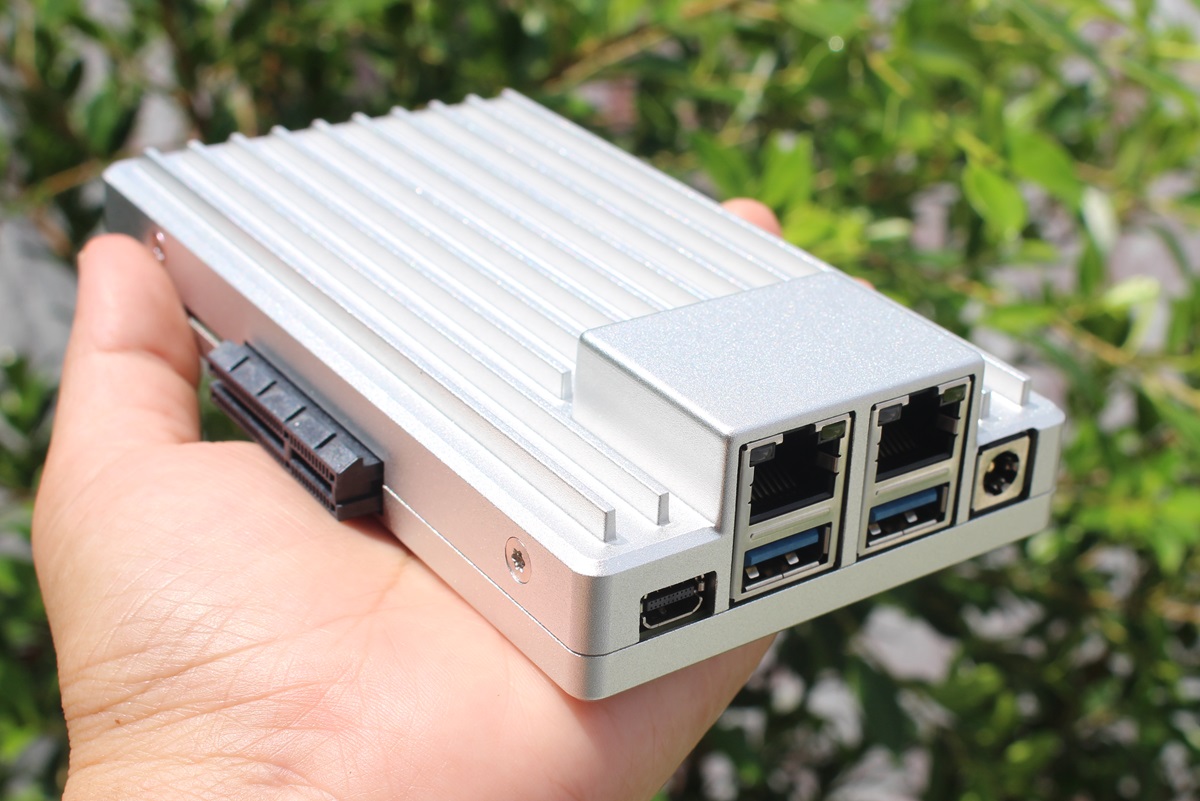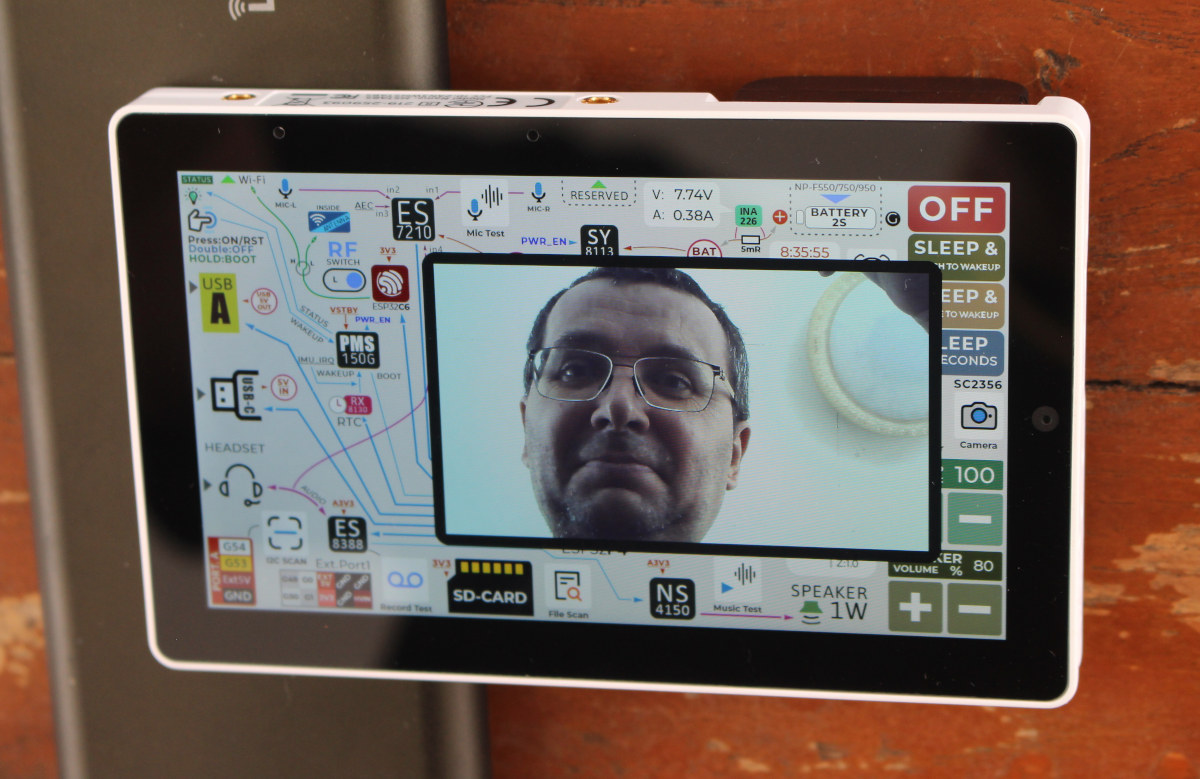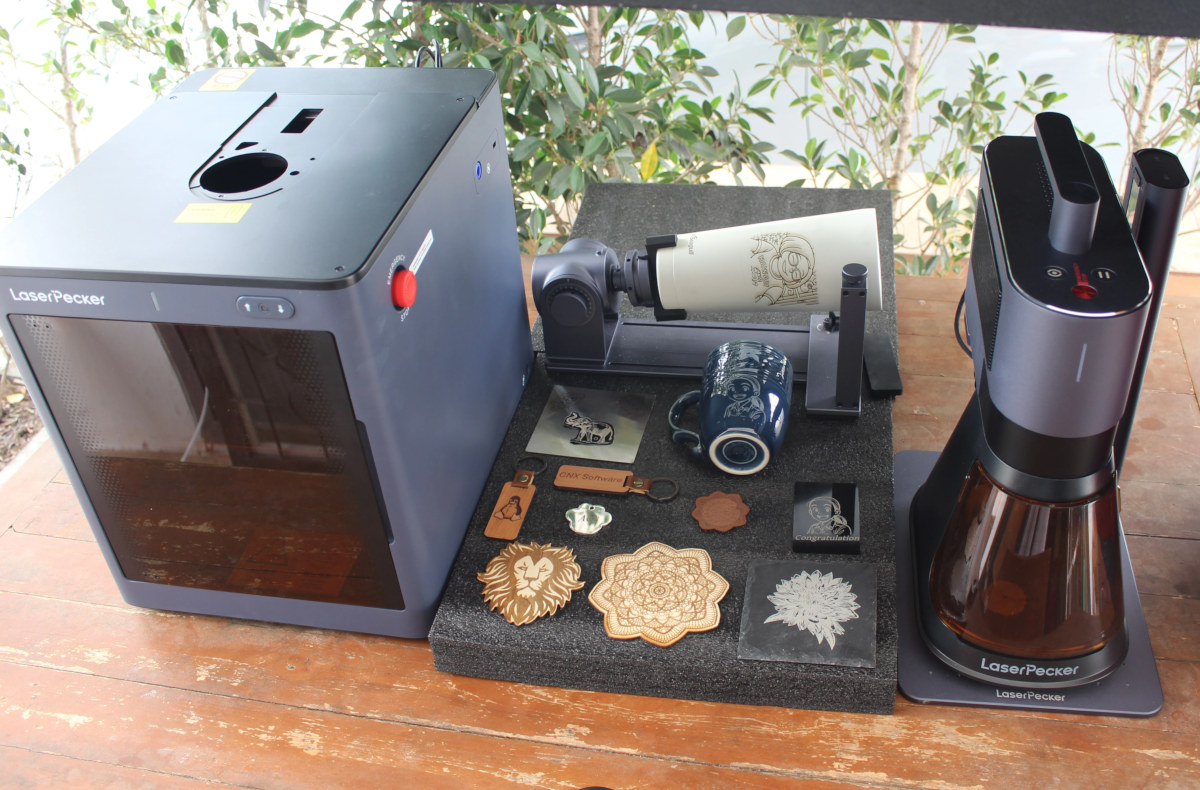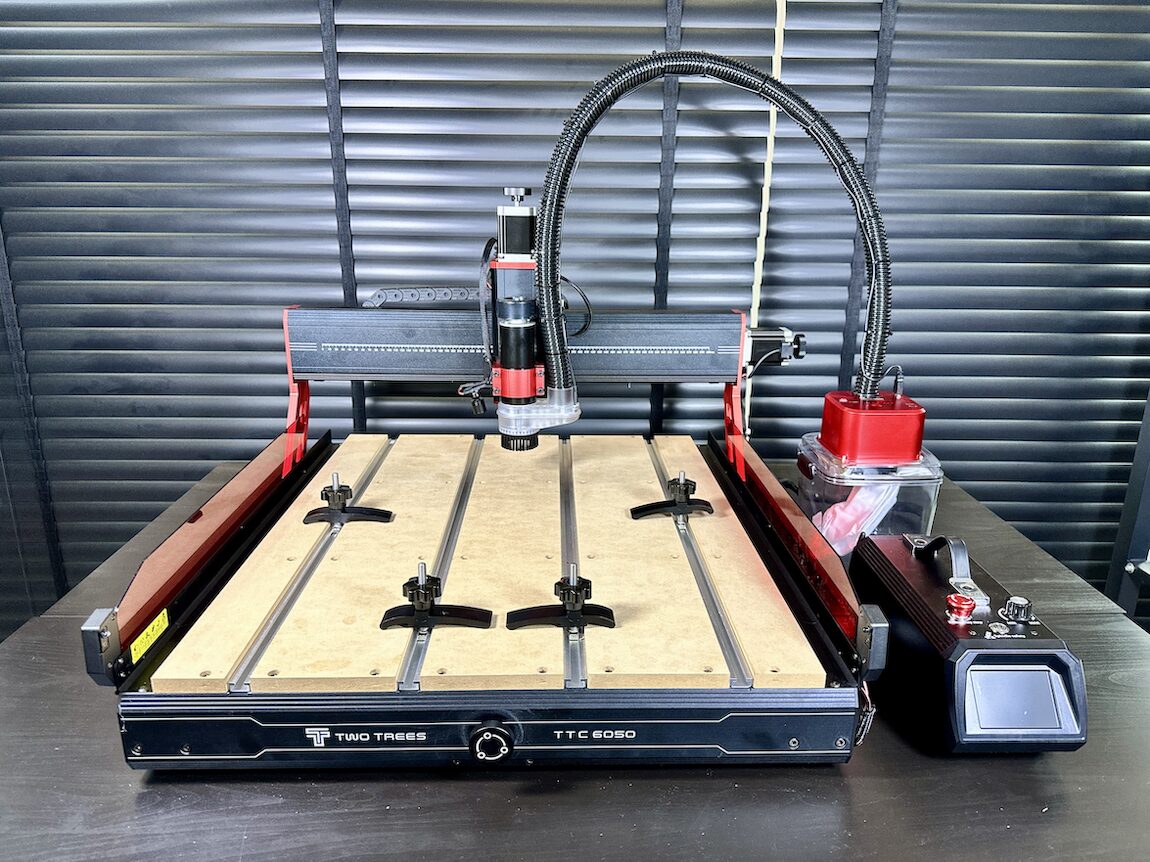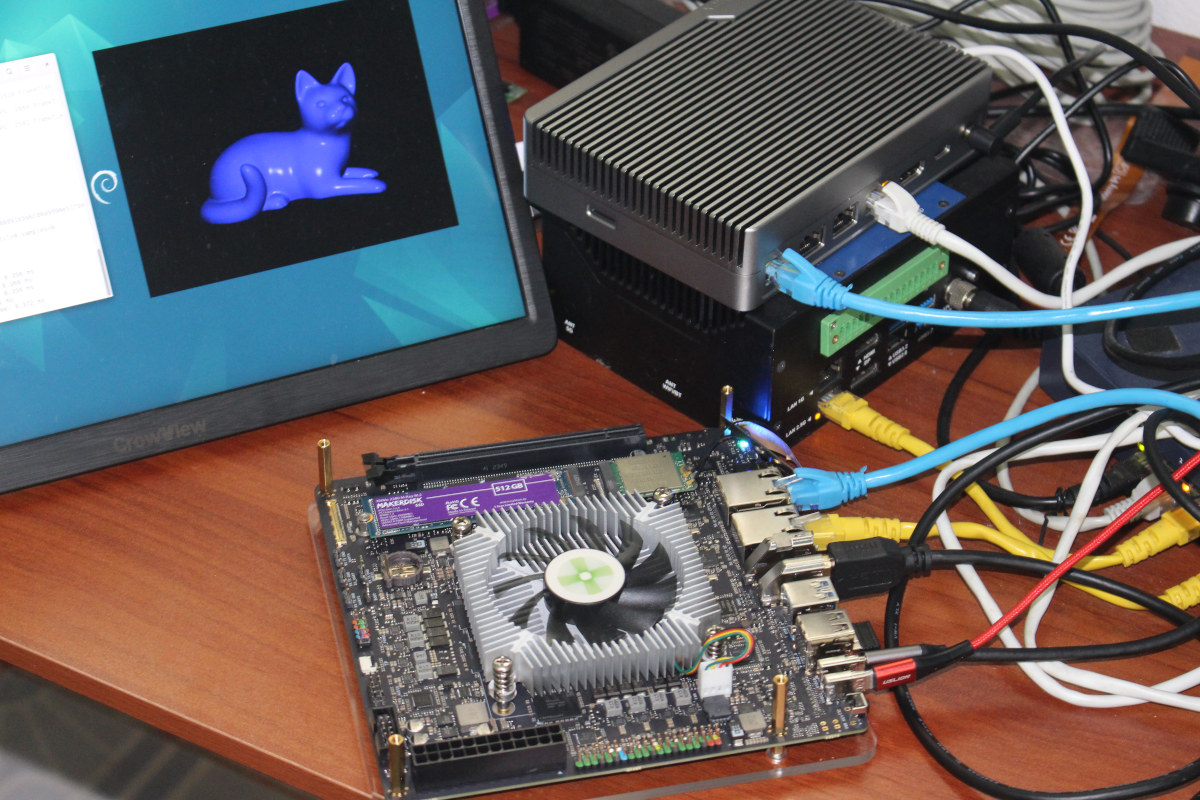I’ve just received a review sample of Chipsee PPC-CM5-156 15.6-inch industrial panel PC that was recently added to the Raspberry Pi CM5-based Chipsee panel PCs family we covered in February with 7-inch and 10-inch models. I’ll do a two-part review starting by listing the specifications, doing an unboxing and a teardown, and booting the system in the first part, before doing further testing with Raspberry Pi OS and most interfaces and features in the second part. Chipsee PPC-CM5-156 specifications SoM – Raspberry Pi CM5 or CM5 Lite with Broadcom BCM2712 quad-core Cortex-A76 SoC, 2GB, 4GB, or 8GB RAM, optional 16GB, 32GB, or 64GB eMMC flash Storage MicroSD card slot M.2 M-Key 2230/2242/2260/2280 (PCIe Gen2 x1) socket for NVMe SSD Display – 15.6-inch IPS display with 1920×1080 resolution, 10-point capacitive touchscreen with 1mm armored glass, 400 cd/m2 brightness Video Output – HDMI 2.0 port up to 4Kp60 Audio 3.5mm audio out […]
M5Stack Tab5 Review – Part 2: Getting started with ESP32-P4 firmware development using the ESP-IDF Framework and Arduino IDE
In the first part of the review, we checked out the hardware of the M5Stack Tab5 ESP32-P4 IoT development kit and tried the demo firmware, whose user interface allows the user to quickly experiment with the camera, microphone, speaker, WiFi, power consumption, GPIOs, RS485, and more. Since there’s no user application for the Tab5 at this stage, I decided to look into software development resources for the ESP32-P4 devkit in the second part of the review. I’ll first follow the instructions to build the demo firmware from source using the ESP-IDF framework, then analyze key aspects of the source and make some small modifications. After that, I’ll have a look at ESP32-P4 Arduino support via M5Unified and M5GFX library. ESP-IDF 5.4.1 installation and ESP32-P4 Hello World program The first step is to get the ESP-IDF 5.4.1 and configure ESP32-P4 following the instructions on the Espressif website, before testing it with […]
SmartWings Smart Shade Review – An outdoor, solar-powered Matter shade tested with Apple HomeKit and Home Assistant
Recently, we received a custom-made-to-order smart shade from SmartWings for review. We never heard about SmartWings before, but the company claims to have been in the smart blind/shade and home automation industry for over 15 years. Their standout feature is the high degree of customisation they offer—whether it’s the type of shade, custom size up to almost 3 meters in width and height, various fabric styles, and compatibility with major Smart Home platforms like Amazon Alexa, Google Home, Apple HomeKit, Samsung SmartThings, Home Assistant, and Hubitat. SmartWings asked us to select a location in the house where we wanted to review the smart shade. We wanted to review a solar-powered outdoor shade, so we selected a windowed door with direct sunlight. We carefully measured the dimensions following the instructions on the company’s website to understand the process. We had to select the shade type, privacy level of the fabric (openness), […]
ZimaBoard 2 micro server review – Part 1: Unboxing, teardown, and ZimaOS interface
We’ve just received a review sample of the ZimaBoard 2 micro server and mini PC powered by an Intel Processor N150 “Twin Lake” CPU. The system features two 2.5 Gbps Ethernet ports, two SATA III ports, two USB 3.1 ports, and a miniDP video port supporting 4K resolution. IceWhale Technology provided us with the ZimaBoard 2 model 832 prototype with 8GB RAM and 32GB eMMC flash preloaded with the ZimaOS operating system for review. In this article, we will unbox the device and its accessories, perform a teardown, and boot the micro server with the pre-installed ZimaOS and check the web dashboard. In the second part of the review, we will test ZimaOS in more detail, run some benchmarks since it’s our first Twin Lake mini PC, install an Ubuntu virtual machine, test the SATA ports and PCIe 3.0 x4 slot, and more. ZimaBoard 2 unboxing We received a package […]
M5Stack Tab5 Review – Part 1: Unboxing, teardown, and first try of the ESP32-P4 and ESP32-C6 5-inch IoT devkit
I’ve just received a review sample of the M5Stack Tab5 ESP32-P4 IoT development kit, which looks like a small tablet with a 5-inch touchscreen display, a 2MP front-facing camera, an ESP32-C6 WiFi 6, Bluetooth, and 802.15.4 wireless module, and various expansion interfaces. Today, I’ll go through an unboxing, a (partial) teardown, and have a quick try with the default firmware and GUI, before checking out how to program the device in the second part of the review. M5Stack Tab5 unboxing I received the Tab5 in its retail package along with an M5Stack-branded transparent sticky tape roll. Not sure why, but thanks M5Stack, sticky tape is always useful, so appreciated! The bottom side of the package has all the key features and specifications that we already covered in our article about the Tab5. The package contains the Tab5 itself, a 2,000mAh/14.8Wh battery, and a cable with six wires for the ExtPort2 […]
LaserPecker LP5 Review – Part 2: A 20W diode & fiber laser engraver tested with LDS software, rotary extension, safety enclosure
We have already checked the specifications, done an unboxing, and shown how to assemble the LaserPecker LP5 2-in-1 fiber & diode laser engraver along with its safety enclosure and rotary extension in the first part of the review. In the second part of the review, we will report our experience using the LaserPecker LP5 laser engraver with various materials such as plywood, stainless steel, rubber, and aluminum, as well as a ceramic cup and an insulated tumbler using either the LDS software on Windows or the LDS mobile apps on an iPad. Using the LaserPecker LP5 laser engraver with LDS software LaserPecker Design Space (LDS) is a laser engraving and cutting software designed specifically for the LaserPecker laser engravers. It’s meant to allow users to easily create projects with personalized engraving, complex patterns, and precise cutting of various materials. It can run on Windows and macOS with Intel or Apple […]
TwoTrees TTC6050 CNC router review with vacuum cleaner Monster (M1) kit and a 800W spindle upgrade
Twotrees has sent us a TTC6050 CNC router for review, along with a vacuum cleaner Monster (M1) kit and an 800W spindle upgrade with a speed of 30,000 RPM. The machine is designed for carving and milling various materials such as wood, plastic, and metal. It features a working area of 600 x 500 x 100 mm and comes equipped with a 500W spindle by default, upgradable to an 800W spindle. It’s capable of handling larger workpieces, works faster, and supports a broader variety of materials than the TwoTrees TTC 450 CNC router we reviewed in 2023 with a 500W spindle. In this review, we will start by listing the specifications and going through an unboxing, before assembling the TTC6050 CNC router and the vacuum cleaner Monster (M1) Kit, and installing the Candle CNC software to conduct milling tests on thick MDF wood. After that, we’ll install the 800W high-speed […]
Radxa Orion O6 Preview – Part 2: Debian 12 – What works, what doesn’t
I went through an unboxing and Debian 12 installation on the Radxa Orion O6 at the end of January, but decided to work on other reviews since software support still needed to be worked on. Since then, there’s been some work done, but no new image released. After waiting for almost two months, I’ve decided to carry on with the review by testing the Debian 12 image in a way similar to the Rock 5B SBC preview I did with Debian 11 in 2022 to check what works and what doesn’t on the Orion O6 at the time of the review. That will involve testing all ports, including 5GbE networking and the PCIe slot with an (old) NVIDIA graphics card, running some benchmarks, and also trying the Debian 12 image with a self-built Linux 6.13 kernel using ACPI instead of UEFI for the default image. Orion O6 SBC benchmarks on […]

